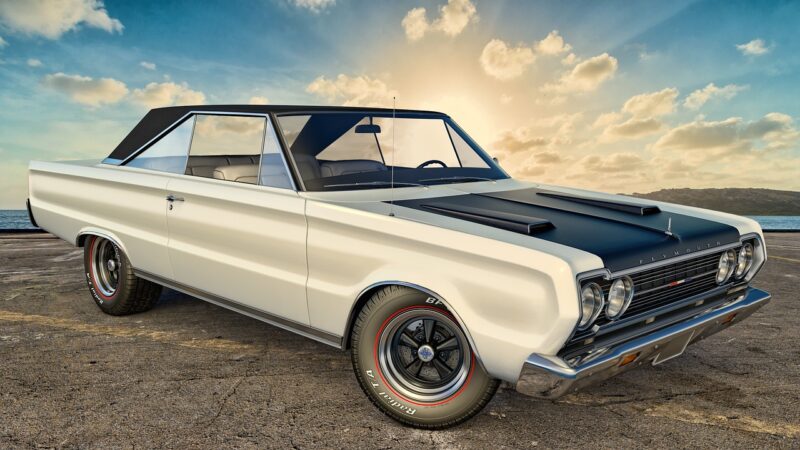Unraveling the Secrets of the World’s Most Iconic Cars: A Journey Through Auto History
November 18, 2024

The automobile has shaped the way we live, work, and interact with the world. From humble beginnings more than a century ago to the dazzling technological advancements of today, cars have become symbols of freedom, innovation, and human ingenuity. This article ventures into the history of some of the world’s most iconic cars and their profound impact on culture, economy, and the global landscape.
1. The Birth of the Automobile: From Dreams to Reality
The story of the automobile begins in the late 19th century when inventors and dreamers envisioned a self-propelled vehicle. Karl Benz is credited with creating the first practical automobile in 1885. His Benz Patent Motorwagen, powered by a single-cylinder four-stroke engine, marked a significant turning point.
лKey Features of the Benz Patent Motorwagen:
- First true automobile powered by an internal combustion engine.
- Innovative design featuring a tubular steel frame.
- Introduced electric ignition and water cooling, setting standards for future vehicles.
The emergence of the automobile industry soon followed, paving the way for mass production and democratization of car ownership.
2. Iconic Models That Shaped the Industry
Throughout history, certain car models have become legends. These cars tell stories of innovation, elegance, and power. Here are several iconic models that have left an indelible mark:
2.1 Ford Model T
The Ford Model T, introduced in 1908, is often referred to as the car that put America on wheels. Produced using assembly line techniques, the Model T revolutionized manufacturing and made car ownership accessible to the masses.
Significance of the Model T:
- First affordable automobile mass-produced in the United States.
- Set a new standard in manufacturing efficiency with assembly line production.
- Influenced countless innovations in automotive design and engineering.
2.2 Volkswagen Beetle
Launched in the 1930s, the Volkswagen Beetle became an enduring symbol of the post-war era. Its distinctive shape and reliable performance allowed it to gain international fame.
Noteworthy Aspects of the Beetle:
- Iconic rounded design that remains a cultural icon today.
- Popularized the concept of the “people’s car”, designed for affordability and simplicity.
- Remains one of the best-selling cars in history, with over 21 million units produced.
2.3 Chevrolet Corvette
The Chevrolet Corvette, introduced in 1953, cemented its place as America’s sports car. With a sleek design and powerful V8 engine, it represents freedom and performance.
Highlights of the Corvette:
- First-generation Corvettes are considered classic collectibles today.
- Unmatched performance with innovative technology in speed and handling.
- Continues to evolve while retaining its status as a cultural icon in America.
3. Revolutionary Innovations in Automotive Technology
Throughout their history, cars have pushed the boundaries of technology and design. Let’s explore some major innovations that have defined the modern automobile:
3.1 Safety Enhancements
Advancements in safety technology have dramatically changed automotive design. Features such as crumple zones, airbags, and anti-lock brakes have saved countless lives. The implementation of electronic stability control has further increased vehicle safety.
3.2 Fuel Efficiency and Alternative Fuels
The demand for fuel-efficient vehicles has driven innovations such as hybrid technology and fully electric vehicles. Brands like Toyota with the Prius, and more recently Tesla, have led the charge toward sustainable transport solutions.
3.3 Autonomous Driving
The future of automobiles is being shaped by the emergence of autonomous driving technology. Companies like Waymo and Tesla are investing heavily in self-driving cars. This technology holds the potential to revolutionize transportation, improving safety and reducing accidents caused by human error.
4. The Cultural Impact of Iconic Cars
Cars have always held a significant place in culture and art. Iconic cars frequently symbolize ideals such as freedom, rebellion, and luxury.
4.1 Cars in Film
Cars often serve as vital characters in films. From the DeLorean in “Back to the Future” to the Ford Mustang in “Bullitt,” these vehicles do not just transport actors but also embody the spirit of the narratives.
The worlds of fashion and automobiles have intertwined, with luxury car brands often collaborating with high-fashion designers to produce limited-edition models that are both functional and fashionable. Examples include collaborations between Ferrari and fashion houses like Prada. As we look forward to the future of automobiles, the traditional concept of the iconic car continues to evolve. New designs, electrification, and autonomous features are expected to define the upcoming era of vehicles. Integrity in performance, sustainability, and luxury remains pivotal. The next generation of iconic cars will likely combine advanced technology with environmental mindfulness to cater to the conscientious consumer. Cars have transcended their utilitarian purpose to become symbols of our shared aspirations and cultural identity. Understanding the history of iconic automobiles not only enriches our appreciation for engineering and design but also highlights the profound relationship between vehicles and the societal narratives they represent. As we traverse this ongoing auto history, one can only imagine what thrilling innovations and iconic designs await us on the horizon. Whether amid the roar of an engine, the gleam of chrome, or the hum of electric motors, the legacy of iconic cars will surely continue to captivate hearts and minds for generations to come.4.2 Cars and Fashion
5. Looking Ahead: The Future of Iconic Cars
Conclusion







